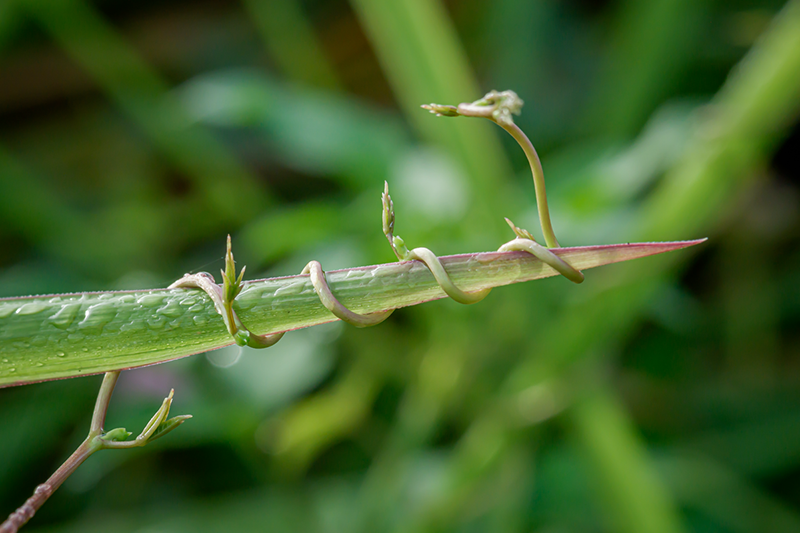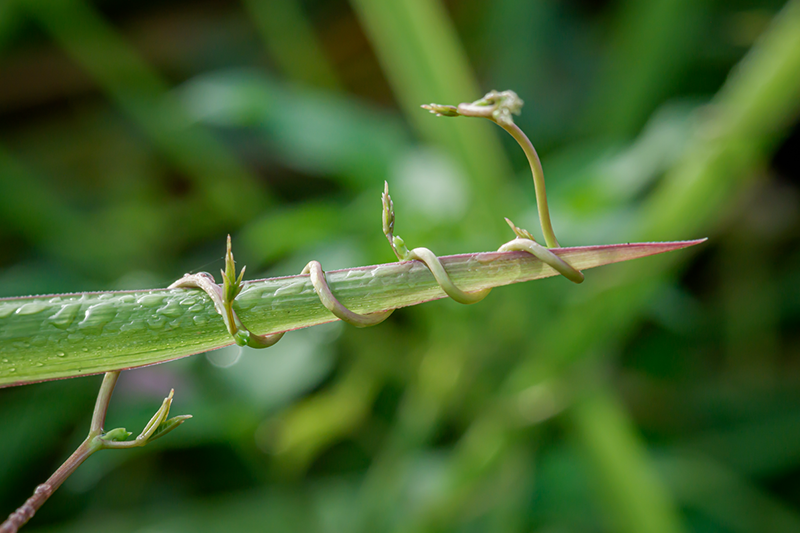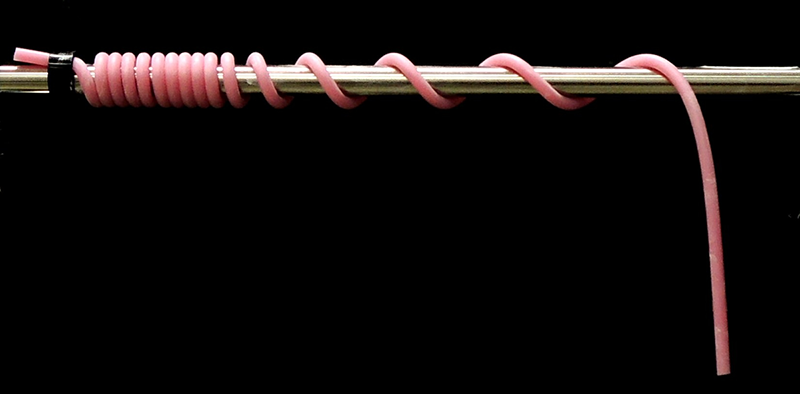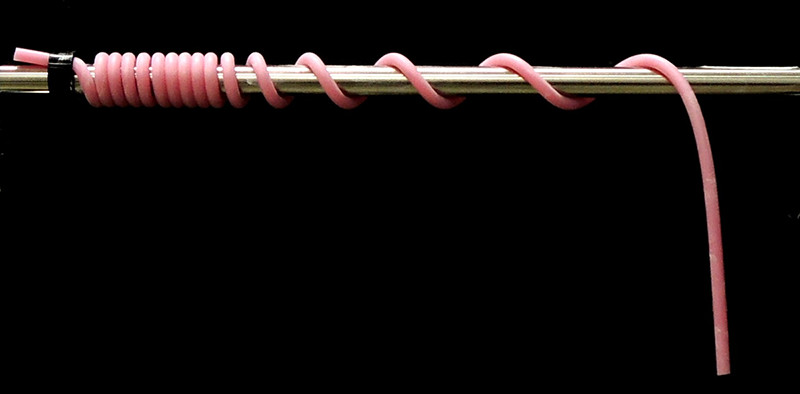Transition During Winding of a String
When a string-like filament is continuously looped around a solid object, sometimes it will coil tightly, and sometimes it will form a looser helix, or it may completely fail to wrap around the object. Now researchers have determined the factors controlling the outcome by studying the winding of a string around a rotating rod, finding a sharp transition between the two coil types as winding proceeds [1]. With further development, they expect the work to be useful in areas such as robotics, where coiled strands can be used to grab onto and manipulate slender objects.
Filaments coil around solid objects in myriad settings, from the packaging of DNA strands in cells to vines curling around tree trunks. Marie Tani of Kyoto University and Hirofumi Wada of Ritsumeiken University, both in Japan, were led to ponder coiling through experience. “To be honest, the first motivation came when we were just playing with yarn in our hands,” says Tani. They noticed that when wrapping yarn around a finger, a strand will sometimes coil tightly but in other cases will wrap in a looser way. As to why, however, they could find no explanation in existing research. “Surprisingly, this deceptively simple question really hasn’t been studied before,” Tani says.
In their experiments, Tani and Wada attached one end of a plastic string (diameter 1–4 mm) to a rigid rod oriented horizontally. The other end of the strand dangled freely. The researchers then rotated the rod at one turn per minute. Using strings whose lengths varied from roughly 10 cm to 1 m, the researchers observed a consistent pattern. At first, the string coiled tightly around the rod. Then, as the length of dangling string grew shorter, the coiling abruptly changed into a looser helical form. Finally, when the string became short enough, the wrapping stopped altogether, when the string’s stiffness was enough to lift it over the rod with each rotation.
Tani and Wada focused primarily on explaining the sudden transition from tight coiling to looser coiling. On the basis of established theory, they argue that it reflects a competition between forces. A key parameter in the experiment is the typical length—call it Lbend—over which the string will bend significantly under its own weight. As they show using the theory of elastic objects, when the length of dangling string L is much longer than Lbend, gravity maintains good tension on the string, so the string winds tightly on the rod. When L becomes shorter than a certain characteristic length determined by Lbend and the radius of the supporting cylinder, however, the rigidity of the string is able to overcome gravity and cause a looser winding.
The researchers developed a mathematical description of this transition by modeling the forces acting on the string. Their model led to an equation formally identical to one originally derived by German mathematician Leonhard Euler to explain why a narrow column under increasing weight will abruptly buckle. The transition from tight coiling to looser winding follows essentially the same mathematical pattern. The analysis also led to an accurate prediction for the way in which the pitch of the helical wrap slowly grows looser following the transition from the tight-winding state.
“This research is remarkable for both the style of its approach and the broad applicability of its findings,” says engineer Pedro Reis, a specialist in flexible structures at the Swiss Federal Institute of Technology in Lausanne. “This investigation underscores how apparently simple systems often exhibit beautiful, overlooked phenomena. Its predictive understanding should be useful in practical, real-world applications.”
In particular, says Tani, the new understanding could be useful in areas of science or engineering where thin tendrils wind around objects. Aside from many examples in biology, she points to applications in robotics, as winding tendrils can be used to grab hold of slim objects.
–Mark Buchanan
Mark Buchanan is a freelance science writer who splits his time between Abergavenny, UK, and Notre Dame de Courson, France.
References
- M. Tani and H. Wada, “How a soft rod wraps around a rotating cylinder,” Phys. Rev. Lett. 132, 058204 (2024).







